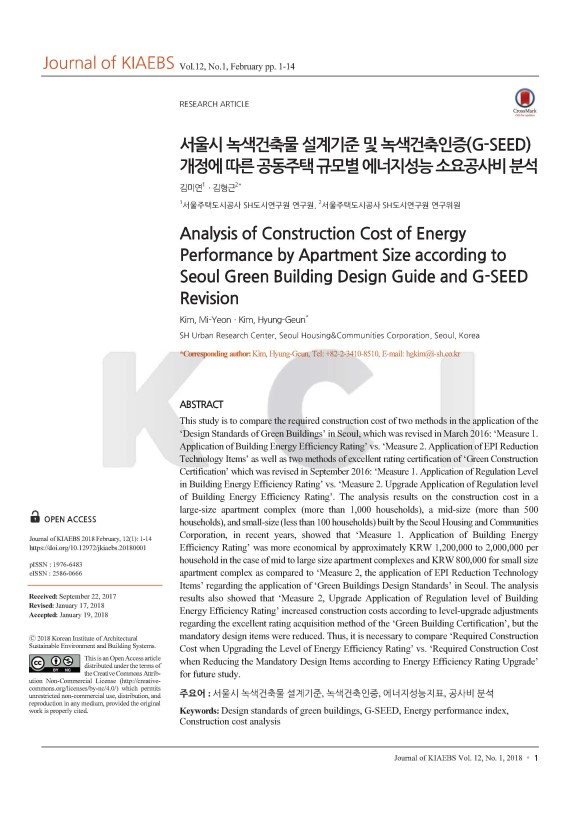서울시 녹색건축물 설계기준 및 녹색건축인증(G-SEED) 개정에 따른 공동주택 규모별 에너지성능 소요공사비 분석

서울시 녹색건축물 설계기준 및 녹색건축인증(G-SEED) 개정에 따른 공동주택 규모별 에너지성능 소요공사비 분석 저자 김미연, 김형근 소속 SH공사, SH 공사 학술지정보 한국건축친환경설비학회 논문집 KCI 발행정보 한국건축친환경설비학회 2018년 자료제공처 NRF 주제분야 공학 > 건축공학 <초록> This study is to compare the required construction cost of two methods in the application of the ‘Design Standards of Green Buildings’ in Seoul, which was revised in March 2016: ‘Measure 1. Application of Building Energy Efficiency Rating’ vs. ‘Measure 2. Application of EPI Reduction Technology Items’ as well as two methods of excellent rating certification of ‘Green Construction Certification’ which was revised in September 2016: ‘Measure 1. Application of Regulation Level in Building Energy Efficiency Rating’ vs. ‘Measure 2. Upgrade Application of Regulation level of Building Energy Efficiency Rating’. The analysis results on the construction cost in a large-size apartment complex (more than 1,000 households), a mid-size (more than 500 households), and small-size (les...


